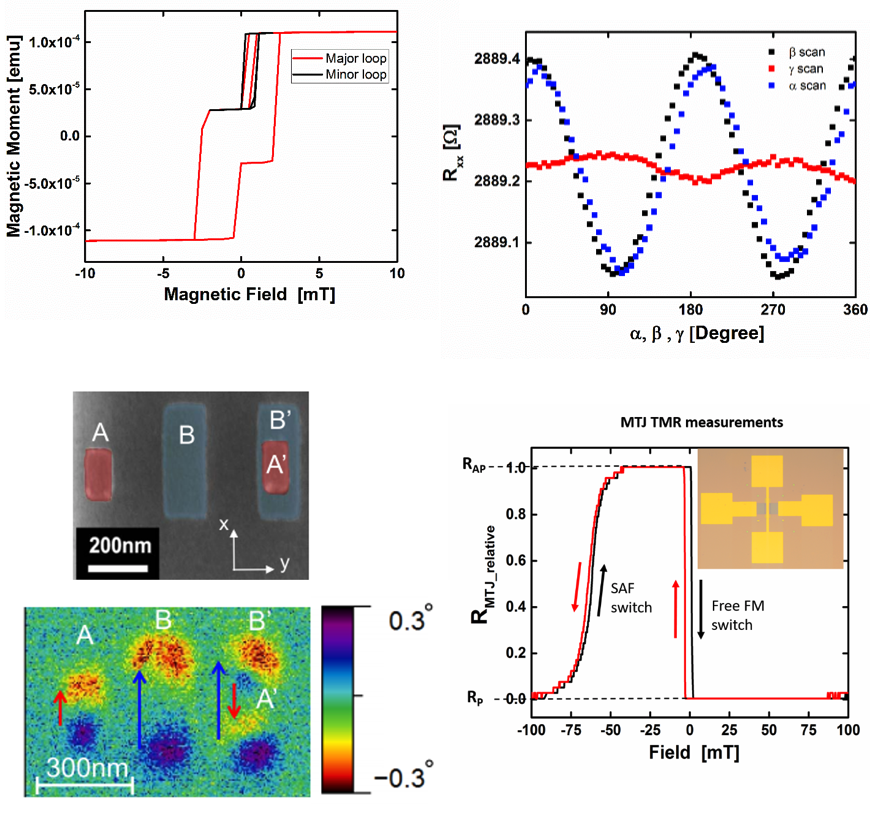Research
Research » Spin Logic » Characterizing Magnets
Novel multilayers consisting of conducting and insulating ferromagnets, antiferromagnets, heavy metals, and 2-D materials are being explored for energy efficient and high speed Spintronics devices. This makes it is necessary to characterize Magnetic Properties such as saturation magnetization, magnetic domain structures, and Physical Parameters such as Spin Hall angles, spin relaxation lengths etc., Spin-torques and MagnetoResistance in these complex multilayers.
Our group has developed the following capabilities for characterization of these ultrathin multilayers:
SQUID/VSM measurements: We can measure temperature dependent magnetization curves with a sensitivity of 10-8 emu down to 1.8 K using an MPMS tool.
Magnetic Tunnel Junction (MTJ) fabrication: Using e-beam lithography and ion milling, we can fabricate MTJs with sizes of a few hundreds of nanometers and we have used Tunneling MagnetoResistance (TMR) as a READ mechanism to show Spin Orbit Torque switching.
Magnetic Force Microscopy (MFM): Our group has refined methods for verification of domain structures within our nanomagnets using a magnetic force microscope (MFM), which gives us an alternative method for detecting the magnetization of each individual nanomagnets.
Harmonic Measurements for Spin Orbit Torque (SOT): Using lock-in techniques to measure higher harmonics generated in heavy metal/ferromagnet structure, we can quantify the SOT acting on the magnetic layer and deduce Spin Hall angles of heavy metals.
Angle-dependent Magnetoresistance: Using a PPMS tool, we can perform angle-dependent and field dependent magnetoresistance measurements down to 1.8 K to explore emerging physical phenomena such as Spin Hall MagnetoResistance (SMR), Spin Seebeck Effect (SSE), etc. (See IEEE Trans. Magnetics, 52, 3400207 (2015))
Authors: Ashish Penumatcha, Chia-Ching Lin

©2015 IEEE. Pictures reprinted with permission from IEEE Trans. Magnetics, 52, 3400207 (2015). DOI: 10.1109/TMAG.2015.2474840

